A Tale of Two Kubos: Book the First
Well, well, well… As fate would have it there have been some small technical complications with the updating schedule as of late and so this update will likely be seeing little to no front page time. To counter balance the effects of this small set back I’ve decided this will be the day I tackle a more mainstream title, one which is very much near and dear to many of our hearts: BLEACH.
BUT WAIT! Before you venture forth into this mess of an article, you must be warned; this article will be a far off stroll from my familiar well worn path of biographical factoids and you may quickly find yourself stumbling through a dense and alien thicket of spoilers, theories, assumptions, “what-if”s, and “should-have-been”s and so, BE WARNED ye fans of weaker heart, for this article will be a long and tortuous decent into a bubbling cauldron of bias and angry, angry fanboy-ism.
For the sake of consistency however, I will make a point of trying to keep this article author-central and begin with A Brief History of Kubo. (it should be noted that this is of little to no relation with Stephen Hawking’s A Brief History of Time.)
To begin, Noriaki Kubo was born on June 26th of 1977 to the wife of a town council member of the town of Fuchuu, in the Aki district of the Hiroshima prefecture of Japan. He attended and graduated from a local highschool before his one-shot, Fire in the Sky, placed him as a finalist in Shueisha’s annual Hop Step Competition for new, young manga authors/artists. Interested in seeing Kubo’s career furthered, one of Shueisha’s editors took Kubo under his wing and together worked with him to create Ultra Unholy Hearted Machine, the first of Kubo’s works to appear in Shueisha’s Weekly Shounen Jump in 1996, which was quickly followed by one-shots Rune Master Urara, and Bad Shield United over the course of the next two years.
It was in 1999 that Kubo got his big break and he began his first serialized title, Zombie Powder. Zombie Powder follows hero, Akutabi Gamma, a wanted bounty-head and the last surviving practitioner of an ancient sword school, on a wandering adventure through a wild west themed world littered with elements of sci-fi, where legends of a macabre panacea, the Zombie Powder, a means of raising the dead and granting immortality to the living draw forth the seediest and vilest scum of humanity in search of its power. To obtain the fabled powder however requires one to first gather together the 12 Rings of the Dead scattered across the land.
Accompanying him on his journey are John Elwood Shepherd, a young boy who seeks the powder to resurrect his dead sister, and the mysterious gunman, C.T. Smith whose goals and origins remain unknown. Later additions to the party of adventurers include Wolfgangina Lalla Getto, the 18 year old, H-cup, female paparazzi who holds herself responsible for the comatose state of her broth Emilio, and Angelle Belle Rose Cooney, the 11 year old, strawberry sweets loving, lolita stalker of hero, Akutabi Gamma, and self titled “Genius Beautiful Psychicer”. There is also a non-traveling ally named Nazna Gemini, a maid loving mad-scientist and the physician and tech-support resource for the heroes on their journey.
Kubo’s first serial title was short lived however and after just under a year of publication got the axe, leaving it with a sudden and uncomfortable ending and just 4 volumes worth of collected chapters -all of which have been published into English by Viz Media and which include Kubo’s one-shots, Ultra Unholy Heart Machine, and Bad Shield United in the tail ends of volumes 2, 3, and 4. Zombie Powder’s major faults can be summed up as the faults of its own genre.
Zombie Powder was a true to form Shounen title of the 90s, touting exciting, fast-paced battle scenes set across a seemingly endless world with a creative array of villains, super powers, and exotic weapons ranging from the quirky to the outright bizarre. It of course then suffered notably from an incredibly up and down pace set by a seemingly random assortment of patchwork side stories consisting of meandering from town to town and investigating vague leads as to the whereabouts of the 12 magical macguffins needed to summon forth the titular master magical macguffin.
Ultimately the only real fault of Zombie Powder as a product was that it didn’t do enough to capture the attention of a broader audience. It was considered so-so on almost all accounts with no drastically unique aspects and simply drifted too far down the popularity polls to keep in the JUMP editorial office’s good favor -and whether came before or after Zombie Powder’s down fall, it is worth noting that Kubo suffered through an episode of depression during the last stretch of Zombie Powder’s publication.
To speak of the editorial office, there are a few notes to be made in regards to problems had with Zombie Powder’s content. One small problem with Zombie Powder that I consider to have been one of the deciding factors in Zombie Powder’s cancellation was the abundance of human-vs-human violence and killing, and the unreserved graphic nature of Kubo’s particular sense of style. Kubo had very few reservations when it came to killing off baddies and goons, something that has since surfaced again in his current running title, Bleach, but given the history of the shounen genre, Kubo stepped just a bit too far and just a bit too late in the game. We don’t often think of anime as being “too” violent, especially with the wide variety of murder and fighting titles made popular over the past 10 years, but historically I think it’s important to put things in context…
TIME FOR A HISTORY LESSON!
As it happens there has been a notable increase of violence in children over the past 20-30 years in Japan. During the 80s, pulp style violence had become a popular sort of trend in JUMP, with titles like Hokuto no Ken/Fist of the North Star, City Hunter, Saint Seiya, Jojo’s Bizarre Adventures, and Bastard!!, among many others, being hit series. Along with the rise of the hentai branch of the anime industry in the mid 80s, anime and manga had suddenly found itself drifting into ethically murky seas.
The extent of this became overwhelmingly clear, and a very serious point of concern, following the arrest of Tsutomu Miyazaki in the summer of 1989. Miyazaki was arrested for the brutal murder and molestation of four preteen girls between ’88 and ’89. When his room was searched and a large collection of anime video tapes found, the murder case, which had already caught the attention of all of Japan for it’s bizarre and grotesque details, ignited a large number of rag media coverage that took to spotlighting Miyazaki’s nearly 6,000 some videotapes of anime, horror films, and pornography as signs of his deranged personality. This in turn lead to the wide spread negative stereotyping of anime fans, and the popularity of the slang, “Otaku” as a derogatory term towards older anime fans.
It was this negative media coverage that caused a large number of magazines to adapt a much stricter policy concerning violence in manga. First and foremost was that heroes could no longer blatantly kill other human beings, and even then, human-on-human violence in general was strongly discouraged if it was without significant reason. It was partly for this reason that the 90s marked a large shift in content from contemporary settings to worlds of fantasy, and even for titles set in contemporary Japan, the presence of aliens and the supernatural was heavy and the line between reality and fiction stretched to its utmost limits.
HISTORY LESSON OVER!
So then, when we look forward a ways in time to find Kubo publishing the first chapters of Bleach in 2001, we notice a very distinct change, and yet at the same time a very distinct lack of change. Looking at just the early chapters of Bleach alone we see spiky-haired protagonist, Kurosaki Ichigo, who has lost a woman in his life, wielding an oversized sword, and fighting back an evil, berserker alter-ego born from both Elwood and Gamma -but hey, those are some pretty stock and standard traits for anime and manga in general. We see that Wolfgangina’s enormous breasts have found a way ’round through the circle of reincarnation and now live vicariously through Inoue Orihime and the flat chested, super powered arm candy that was Angelle makes a return through Kuchiki Rukia, although there’s a notable change in personality in both girls. The middle aged, glasses-wearing, gunman rival/companion, C.T. Smith, gets downgraded into Ishida Uryuu, the highschool age archer, and at the same time fuses with the mad-scientist and tech-wizard, Nazna Gemini, to create the shady shop keeper and mentor, Urahara Kisuke -still sporting C.T. Smiths hat shadow over the eyes. And of course there’s still the black butterfly motif hanging around for no particular reason other than for the sake of style.
The premise however seems different enough; where as Zombie Powder had the heroes, Gamma and Elwood, running from town to town fighting everyone and everything in search of the Rings of the Dead, Ichigo finds himself bound to his home town conveniently enough, fighting a very specific enemy, who just happen to be monsters. Both are common iterations of the basic shounen formula, but appear to be reasonably different at first glance.
Now you’ll have to indulge me and my theories because this is where things get to be interesting. If you notice, The opening premise to Bleach almost entirely patches the holes that likely sunk Zombie Powder for good: Humans killing humans is bad and treads on shaky moral guidelines? Ok, well now we’re fighting monsters, and they are in fact, by definition, born from negativity! Introducing new towns and getting into new antics just about EVERY chapter wastes too much time? Fine, we’ll just stay here in Karakura town every chapter then. And what’s that, you say? Readers complain the Rings of the Dead are too much like the Dragon Balls? Fine, no more magical wish-granting macguffins at all, good riddance to them! Well then problems solved! Sure, Kubo may have written Zombie Powder the way he did because he liked it that way, but if what he likes is a problem with the editors, he can compromise his story telling vision for the sake of success!
If you don’t quite get where the sarcastic tone in my voice is coming from, allow me to shed some light onto things. Let’s turn the clock ahead by 1 year. 50 chapters into Bleach and we see a sudden change in development: chapter 51 begins the start of the first big story arc of Bleach, the Kuchiki Rukia Rescue arc, aka the SoulSociety Arc.
I should note that a successful first year of publication is usually a fair sign for popular titles in Jump that they’ve got at least another year of solid publication guaranteed, and that that second year’s overall ratings will determine just how much faith can be put in the author for consistently popular work in the future. That being said, it was just after passing this sort of trial period that Kubo launched directly into the Rescue Arc.
Now let me make note for you of the significant changes this made to Kubo’s manga:
First, Ichigo must obtain his powers from Urahara’s training and in doing so he gains the Getsuga Tenshou technique that allows him to fire concentrated spirit energy from the edge of his sword, this later develops into a Black Getsuga that takes the form of a whispy, flame-like, variation of the same attack where the coloration is changed to black, as the name implies. I’ll point out now that in Zombie Powder, Akutabi Gamma’s sword style allowed him to wreath the chains of his chainsaw-sword in black flames that he would whip and lash at his opponents with.
Second, the setting changes from the humble little town of Karakura to the wide expanse of SoulSociety, and finding themselves in this strange new world the heroes must take to finding their way not only into the center of SoulSociety but to Rukia’s location where they will of course break her free of her imprisonment.
Third is that the hollows are pushed entirely out of the picture and our attentions are turned to the Shinigami as the new enemies/roadblocks that must be overcome in order for the plot to continue. For those who don’t know, the shinigami (Lit. Death Gods) are psychopomp figures in Japanese/Shinto mythos and in the case of Bleach, take the form of people dressed in black kimono’s with white sashes and armed with katanas capable of purifying wicked souls.
Now I have to stop and ask you; “Has it all sunk in yet?” I think you’ll find that all of the changes made in facilitating the SoulSociety Arc serve to directly cancel out all of the major changes Kubo seemed to have made between Zombie Powder and Bleach.
The monsters are gone and we’re fighting human looking people again which puts us back into a gray area where the villains are also people and can now be sympathized with, in spite of any or at times ALL serious character flaws -Zaraki Kenpachi, I’m looking right at you there buddy. Because, after all, it should go without saying that having young readers idolize the battle-hungry sociopath presents no fundamental problems in regards to ethics!
In leaving Karakura behind we enter the strange new world that is Soul Society and must follow our heroes’ adventure through the unknown while learning how the different places and customs of Soul Society work.
And then finally we’re no longer just protecting people as we come to them, we have a finite goal for the first real time, and it doesn’t just start and end with beating up the badguy: Ichigo and company must find Rukia, stop the execution, and get back to the Human World.
So now maybe you realize that at the first signs of an ongoing story arc, Bleach suddenly goes back to being a lot like what Kubo had going with Zombie Powder in the first place, sans the magical wish granting macguffin…
OH WAIT! Yes, that’s right, in the middle of the rescue operation when we’re met with Kubo’s first attempt at a plot twist -admittedly one of only few successful ones he has managed to employ thus far- in which Soul Society’s 5th Division captain, Aizen Sousuke, turns up dead, we begin tugging the strings of inquiry that eventually lead us to a little plot device known as the Hougyoku (Lit. Rupture Gem) a magical tool and product of the experiments of Urahara Kisuke that allows for the villain to create an army of more powerful enemies, and so naturally it is our hero’s duty to retrieve the dangerous magical device from the corrupt clutches of the evil mastermind. So, in other words, it’s a magical macguffin.
Ok, so now we’ve gotten past a big chunk of the story with Bleach. And now, 20 volumes/178 chapters/63episodes (+28 filler episodes) later, we find ourselves at another major turning point: Rukia has been saved, the shinigami of Soul Society have gone from adversaries to allies, Aizen has been established as the new villain, and the retrieval of the Hougyoku is now the overarching goal of the story. It is also here that I will end Part 1 of this article and leave you all hanging for a few weeks! Bwahahahahahahaha!
Until next time, suckers! >:D





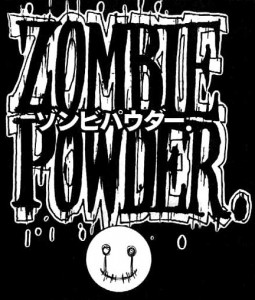
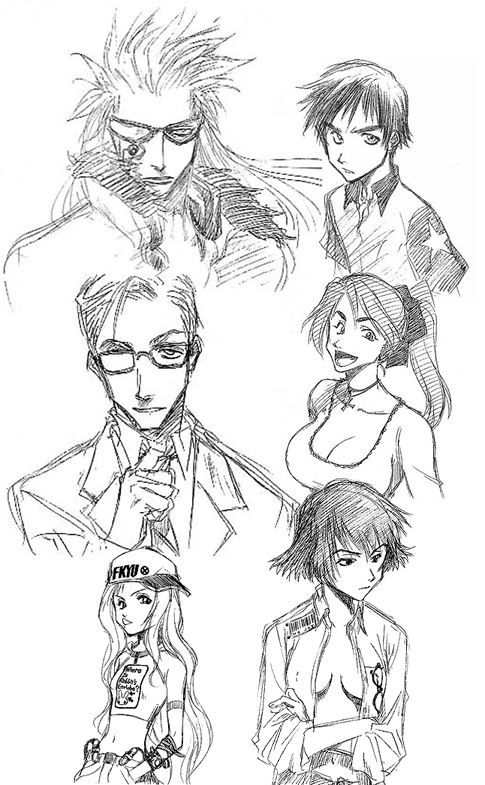
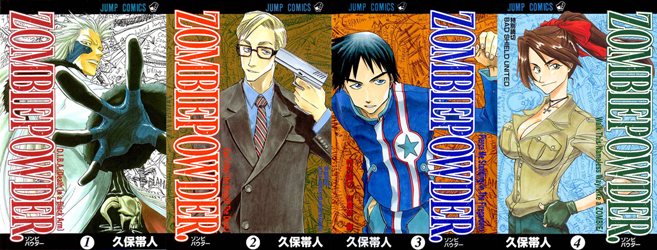

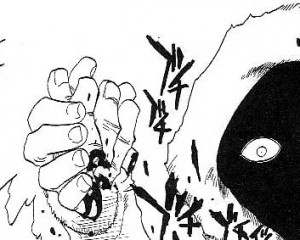


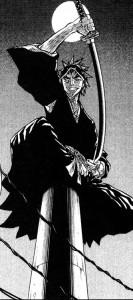
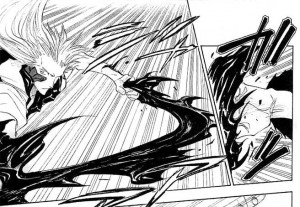


![[M7]Bleach-ch178-15 Aizen Sousuke](http://918thefan.com/wp-content/uploads/2010/10/M7Bleach-ch178-15-e1288284146289-215x300.jpg)
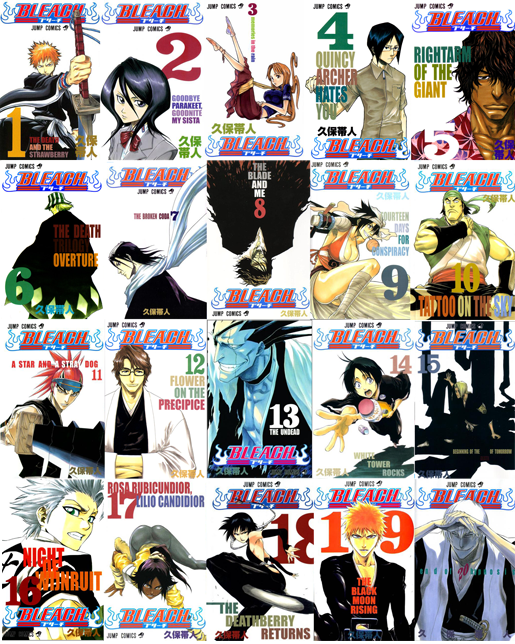
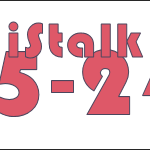





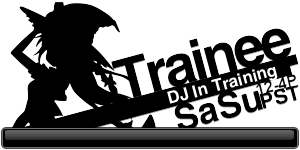
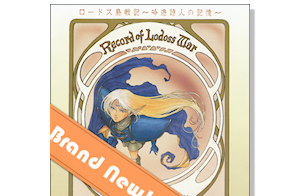





I feel like I need to read Zombie Powder now.Oh and,was there also a character that was useless and made life harder for the main character in Zombie Powder that also was reincarnated into Orihime?
[…] If you didn’t get the chance, I’d like to direct you first to my previous article, A Tale of Two Kubos: Book The First, and ask that you read through it thoroughly before starting with this article, or else you may […]
[…] styling’s of one Tite Kubo, author and artist of BLEACH, before moving on with the new article: A Tale of Two Kubos: Book the First … Book the Second and … Book the […]
[…] rambling review on Kubo Tite and of course his hit anime/manga, Bleach. If you haven’t read my Bleach review, you might want to do so now, though I won’t say you “have” to. If you […]
[…] know of the Bleach anime/manga? If you don’t, may I suggest reading Bismarck Kamen’s three part series on Bleach? That's Nel Tu! She's so […]
Same thing happened with Hiro Mashima with Rave Master and Fairy Tail.
But the one difference being that he didn’t get his manga canceled.
THis is so interesting, be looking forward to part two. 😀